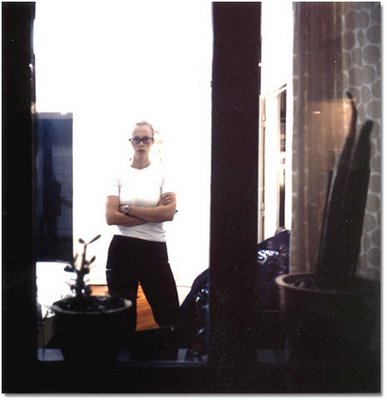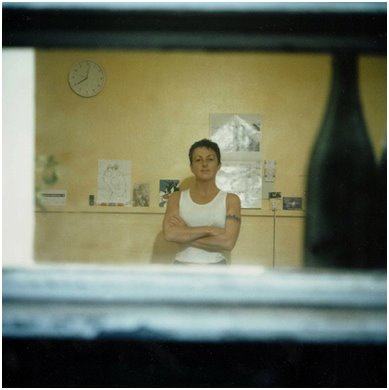




Hello Everyone!
I hope you are all having a good time shooting your projects and being oh so productive.
Just a reminder of what we are expecting here on the old blog- and it's pretty simple- just read the chapter in the Cotton book, check out the corresponding blog post, and write an insightful, interesting comment!
You will need to register for a Blogger account but that is quite simple.
SO, for our first post and discussion-
Philip-Lorca di Coricia's "Heads"
The following is a brief review of this work- (and anytime I use someone else's comments on the photographs, it will appear in this yellow font color)
MICHAEL KIMMELMAN , NYTimes, 9/14/2001 Since the mid-1990's Mr. diCorcia has helped to redefine the tradition of street photography (Walker Evans's subway pictures, etc.) Nearly a decade ago he began photographing strangers caught in his strobe light. The ''Streetwork'' series turned pedestrians into unsuspecting performers and the sidewalks along places like Sunset Boulevard, and in Tokyo and Paris, into ad-hoc movie sets, the strobes picking passers-by out of crowds the way spotlights isolate actors onstage. The lights gave their gestures a sudden, baroque gravity and made everything around them seem contrived and weirdly portentous.
For the new photographs a strobe was affixed to scaffolding in Times Square; Mr. diCorcia stood farther away than before, using a longer lens. The result: crisp and stark portraits picked out of murky blackness -- just heads, no longer cityscapes, the surroundings now blocked by the scaffolding. They are simpler images and more intimate, the paradox of standing farther away being enhanced intimacy.
The cinematic quality stays the same, though, especially because Mr. diCorcia, like many photographers today, makes big, poster-size prints: 48 by 60 inches each, high-resolution digital scans. He took thousands of pictures from the end of 1999 to earlier this year to produce 17 photographs, 13 of which are in this show. The strobe functions like the light of revelation, a high-beam from heaven, and as usual, by stopping time, the photographs incline us to look at what we see every day but fail to notice, although the longer we stare at these people the more extraordinarily impenetrable they seem.
Unaware of the camera, they are absorbed in thought or gaze absently; they are how we act most of the time, walking down the street, in a crowd, focused on something or nothing. But enlarged and isolated, their expressions become riddles, intensely melodramatic and strangely touching.
Mr. diCorcia's pictures remind us, among other things, that we are each our own little universe of secrets, and vulnerable. Good art makes you see the world differently, at least for a while, and after seeing Mr. diCorcia's new ''Heads,'' for the next few hours you won't pass another person on the street in the same absent way.
A few questions to spark discussion:
- Are these images an invasion of privacy? How would you feel if you walked into a gallery and saw a massive image of you that you neve know someone had taken?
- Are these images portraits, in the way you understand portraits are supposed to be?
- What do you think Kimmelman means when he says "...enlarged and isolated, their expressions become riddles, intensely melodramatic and strangely touching"?














